
Vendée Globe Record Smashed
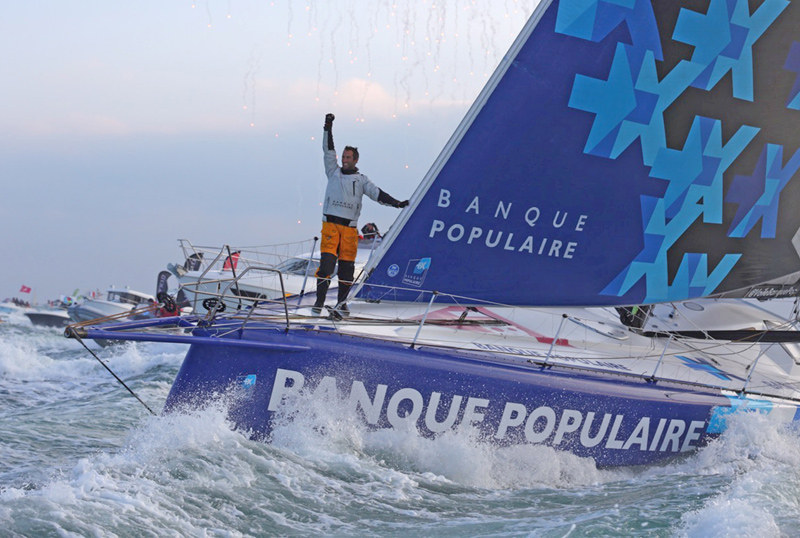
After just 74 days at sea, Armel Le Cléac’h has returned to Les Sables d’Olonne, France, aboard his IMOCA 60 Banque Populaire VIII, thus winning the eighth edition of the Vendée Globe, a solo nonstop sprint around the planet.
Known in racing circles as ‘The Jackal’ for relentlessly stalking his prey, Le Cléac’h found the shoe on the other foot for much of this race, as he was closely chased by Briton Alex Thomson onboard Hugo Boss, who has recently crossed the line to finish in second place. Between the two of them, they led virtually the entire race and broke every course record along the way, with Thomson only just recently breaking the official 24-hour solo monohull distance record with a single-day run of 536.8 nm. Compared to their efforts in the previous edition of this race, both Le Cléac’h and Thomson moved up one position on the podium, as Armel Le Cléac’h finished runner-up to François Gabart last time, while Alex Thomson finished third. Le Cléac’h in particular has now cemented his spot as one of the all-time greats of solo sailing, having won the Solitaire du Figaro twice and now finally winning the Vendée Globe after two previous second-place finishes.
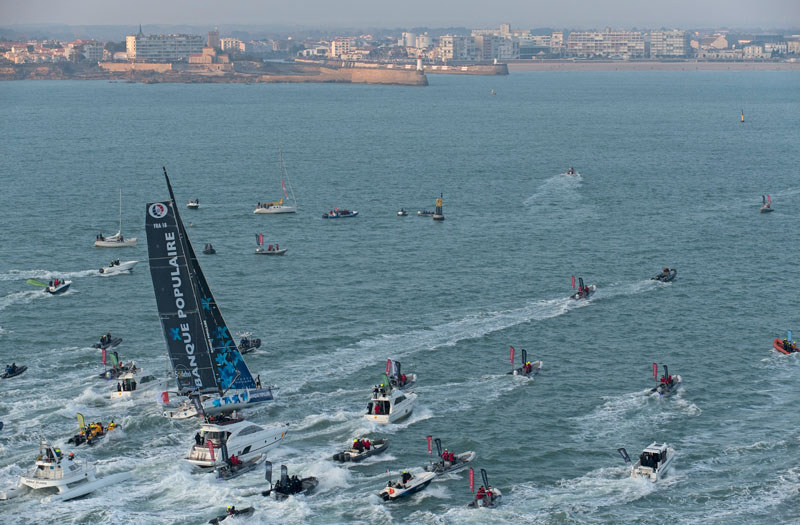
Ever since their November 6 departure from Les Sables d’Olonne under sunny skies and moderate breeze, Banque Populaire and Hugo Boss both figured as the favorites within the fleet of 29 boats. While nearly ten boats were thought to have had a realistic shot at claiming victory in the race, Le Cléac’h and Thomson quickly established themselves as the boats to beat. Thomson led down most of the Atlantic before Hugo Boss’ starboard foil broke off. Crippled when sailing on a port tack, Thomson began slowly bleeding miles to Le Cleac’h, until being overtaken on December 3 in the South Indian Ocean. Building a lead of some 819 nm as the duo rounded Cape Horn, Armel Le Cléac’h would lead until the finish, though he saw a hard-charging Alex Thomson cut the lead to 50 nm at the equator and to as little as 30 nm when in the North Atlantic. Methodical in his routing and open-ocean match-racing tactics, Armel Le Cléac’h played his hand beautifully, never relinquishing the lead, and sailing into Les Sables d’Olonne as the new Vendée Globe champion — and finally achieving the goal he set out to accomplish more than a decade ago.
The new Vendée Globe reference time set by Armel Le Cléac’h is 74 days, 3 hours and 35 minutes at an average theoretical speed of 13.77 knots. This time is nearly four days faster than the record time set by François Gabart in the 2012-13 edition of the race onboard MACIF.
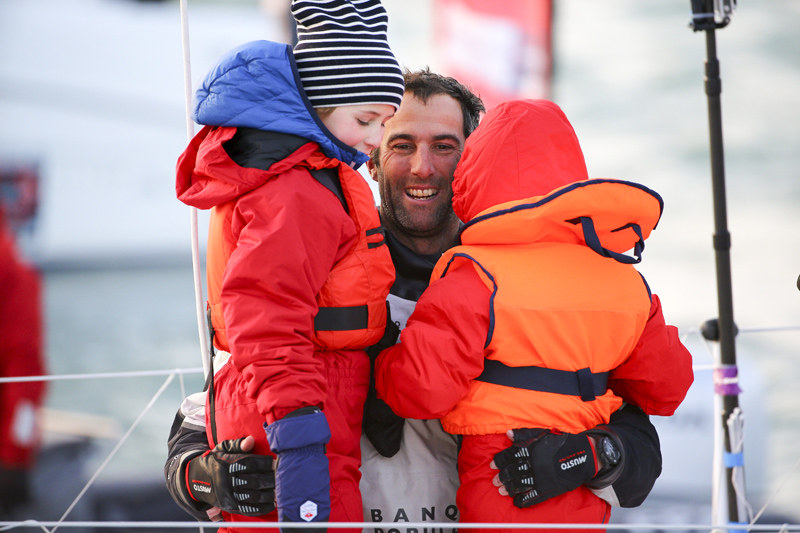
Elsewhere in the Atlantic, Jeremie Beyou maintains a solid third place just 500 miles from the finish, while the three-way battle for fourth place rages on between Yann Eliès, Jean Le Cam and Jean-Pierre Dick.
Meanwhile, maxi-trimaran IDEC Sport has just recently crossed the equator, nearly three days ahead of the reference time set by Banque Populaire V in her quest to break the Trophée Jules Verne record (fastest outright circumnavigation on any type of boat and any crew size).
Will Someone Save Escapade?
It breaks our hearts every time a vintage wooden yacht is left to rot, or worse yet, is chopped into dumpster-sized pieces for lack of a better alternative. The latter option may be the fate of the 1937 Philip Rhodes thoroughbred Escapade if a new ‘steward’ doesn’t step forward before the end of this month to take on her necessary stem-to-stern refit.
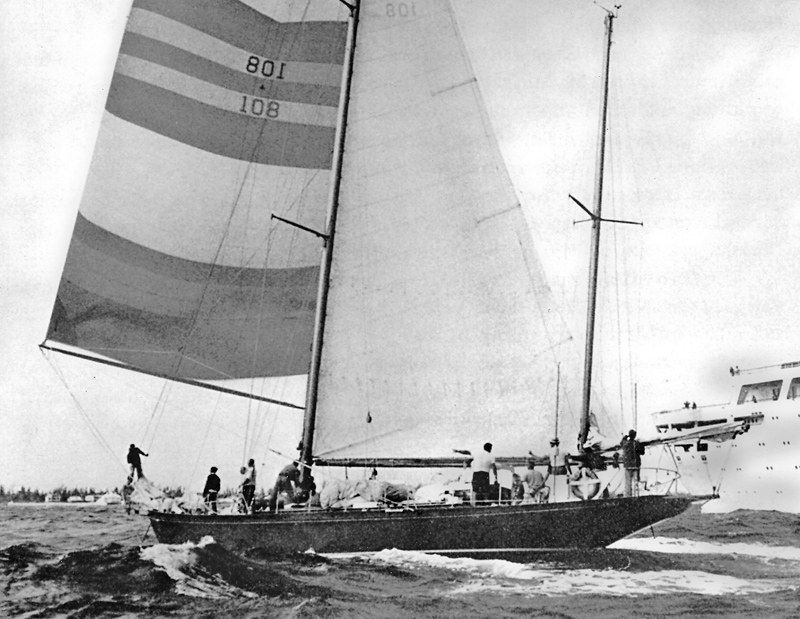
©Latitude 38 Media, LLC
Previous efforts to sell Escapade, on the hard at Richmond’s KKMI yard for 15 years, had no success, but at this point yard owner Paul Kaplan — who is a devout wooden boat aficionado himself — says "I’d be willing to sell her for a buck" to a new owner who can demonstrate that he or she is up to the daunting task of refitting her.
Built to a Rhodes design by the Luders Marine Construction Company of Stamford, Connecticut, the yawl Escapade was constructed of wood to the maximum length allowed by the prevailing (Cruising Club of America) rating rule of the era: 73 feet. A centerboarder, she draws 14 feet with her board down, and has a beam of 17 feet and a waterline length of 55 feet.
As any sailing historian worth his salt could tell you, Escapade and her Sparkman & Stephens-designed cousins Bolero and Baruna were dubbed the Three Great American Racing Yawls. And Escapade, with her masthead rig, longer waterline and bowsprit, is said to have been the most fearsome of the three. She carried 2,630 square feet of sail.
If our pockets were deeper, we might step up and take on the restoration of this one-of-a-kind vessel, but since we can’t we certainly hope someone else will. After all, we can’t think of a better use for ‘disposable income’ than refurbishing such a pedigreed thoroughbred. Interested parties may contact Kaplan at KKMI — but please do so very soon!
2017 YRA Calendar Available Now
Three Sailors Rescued off Hawaii
We don’t know yet why the 48-ft sailboat Bobo Link sank Wednesday less than three miles off the Big Island of Hawaii — conditions on the scene appear to have been calm at the time — but the incident brings to light several important reminders for all offshore sailors.
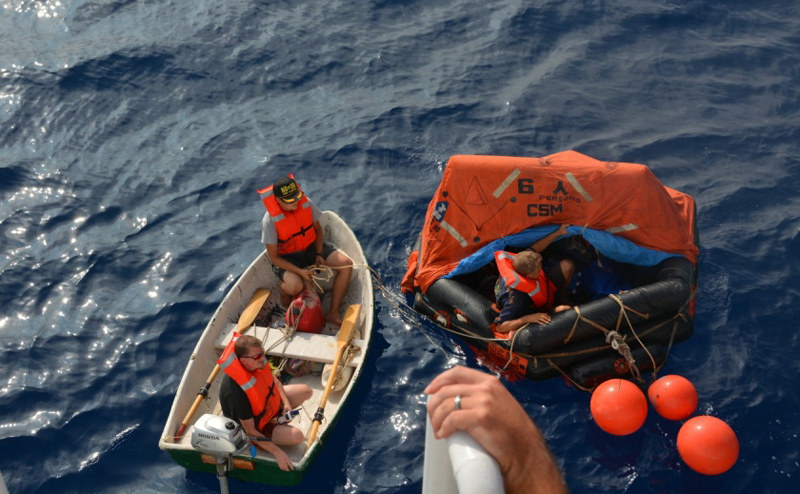
"We cannot stress enough the importance of carrying and properly registering an emergency position indicating radio beacon [EPIRB], which is ultimately what saved the lives of these men," said Petty Officer 1st Class Tyler Peterson of Coast Guard Sector Honolulu. "While the men also were able to contact emergency services personnel via cell phone, we strongly recommend boaters carry a working VHF radio in the event that cell service in unavailable." The survivors were owner Steven Jenkins, 48, Brandan Jenkins, 23, and Nathan Gibson, 43.
As we’ve learned over the years, many times when a used boat changes hands the new owner fails to update the registration info — including emergency contact info for a friend or relative who knows the vessel’s route plan. Likewise, if you buy a personal EPIRB such as a DeLorme InReach, do not wait until an emergency happens to register pertinent info. Your life could depend on it. Note also that many DSC-enabled VHFs and AIS units have mayday buttons that can pinpoint your location for potential rescuers.
